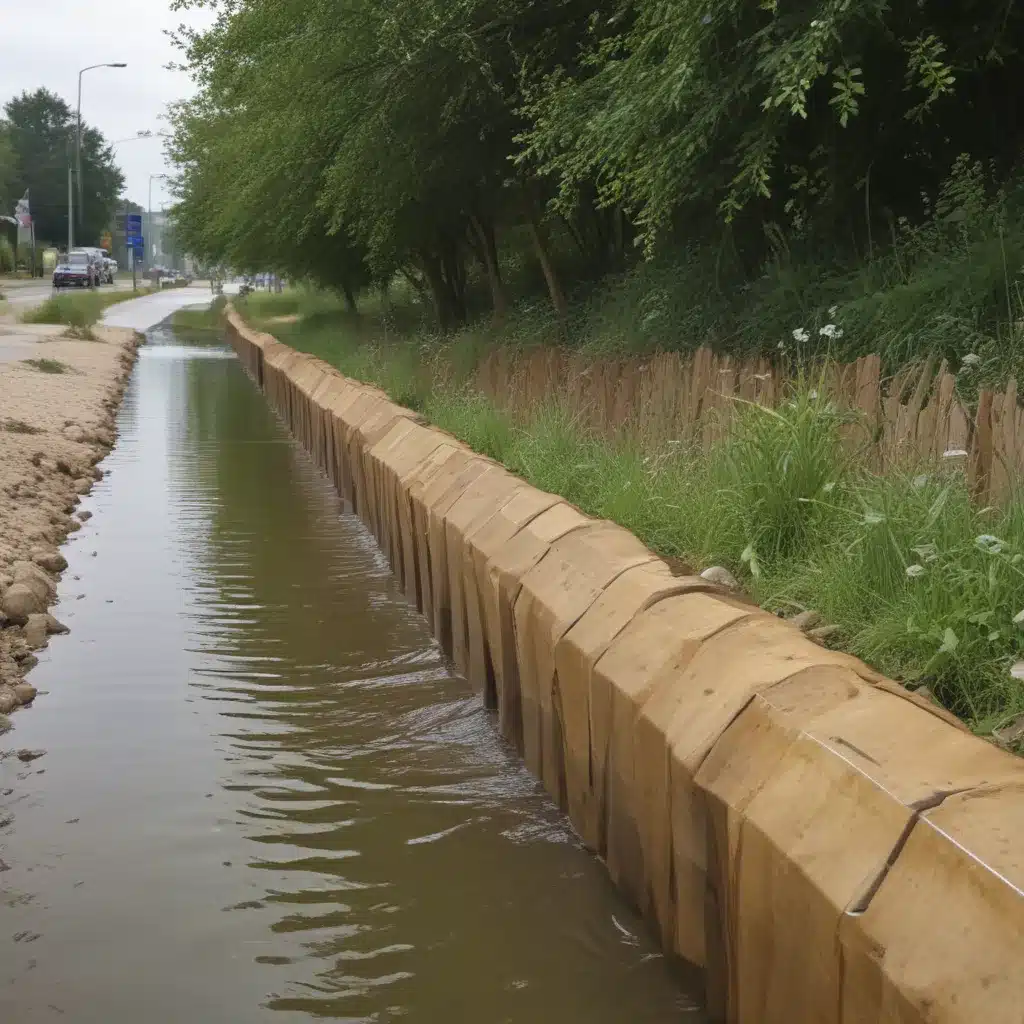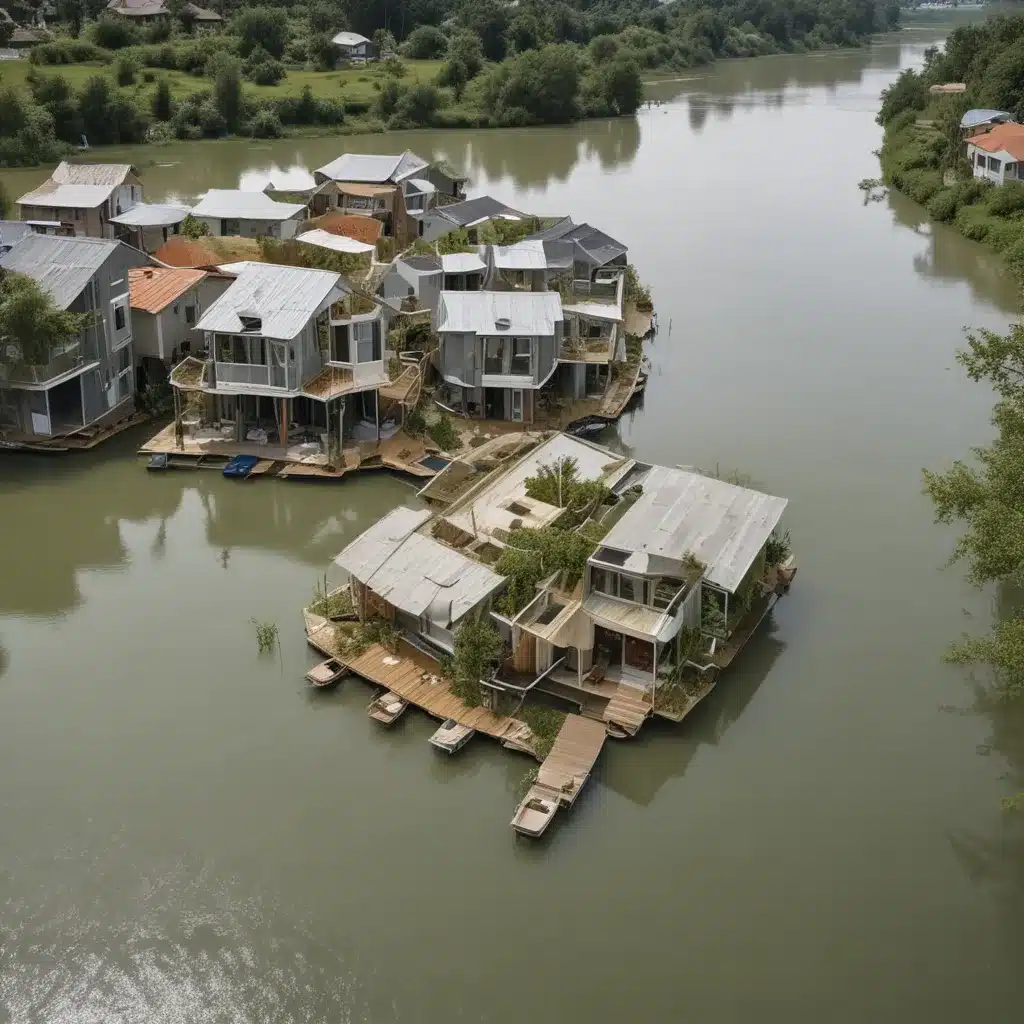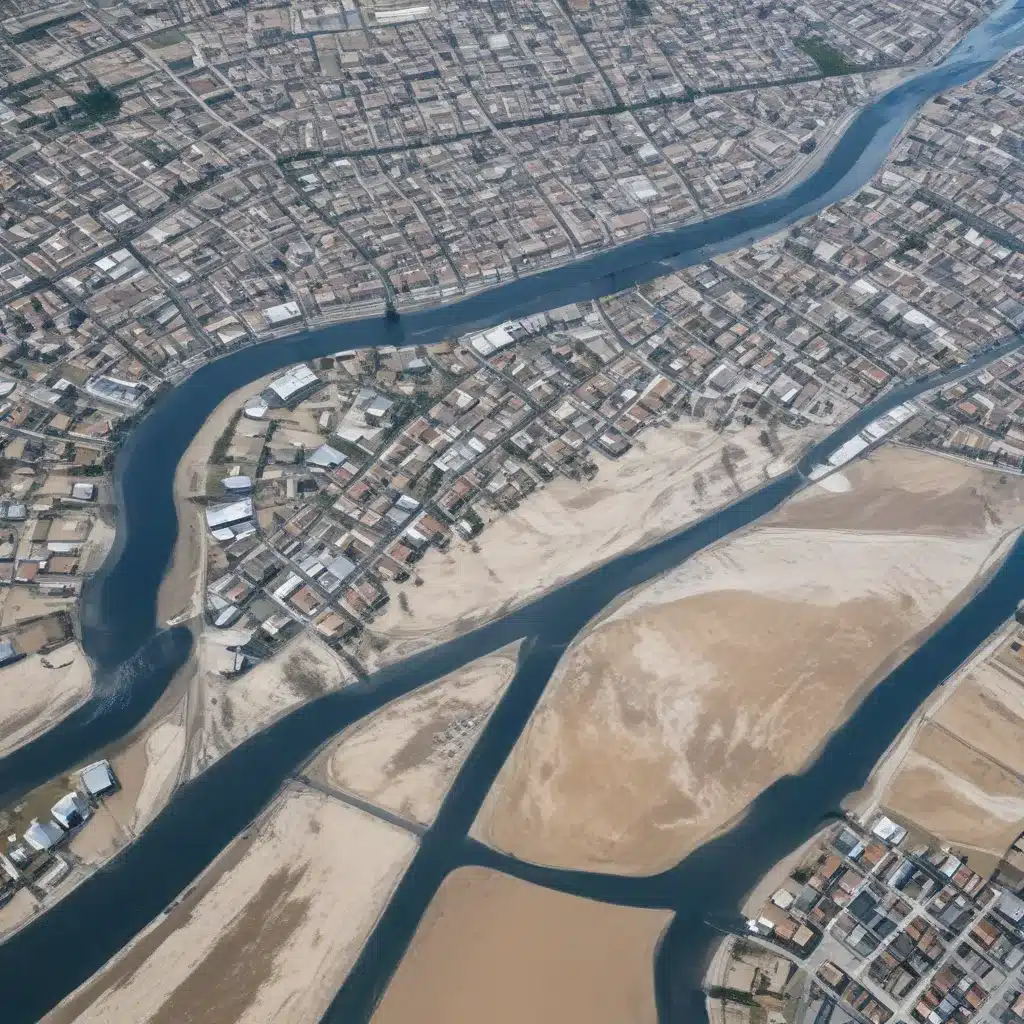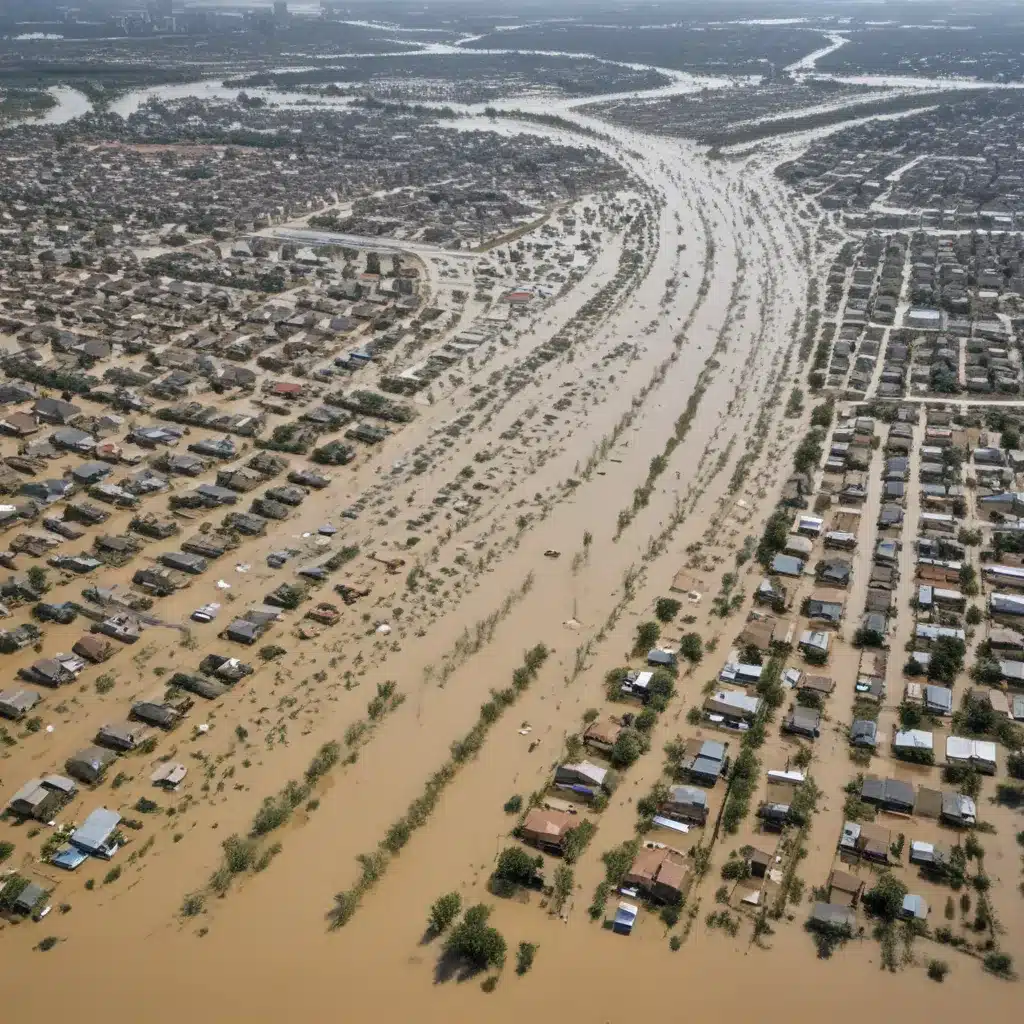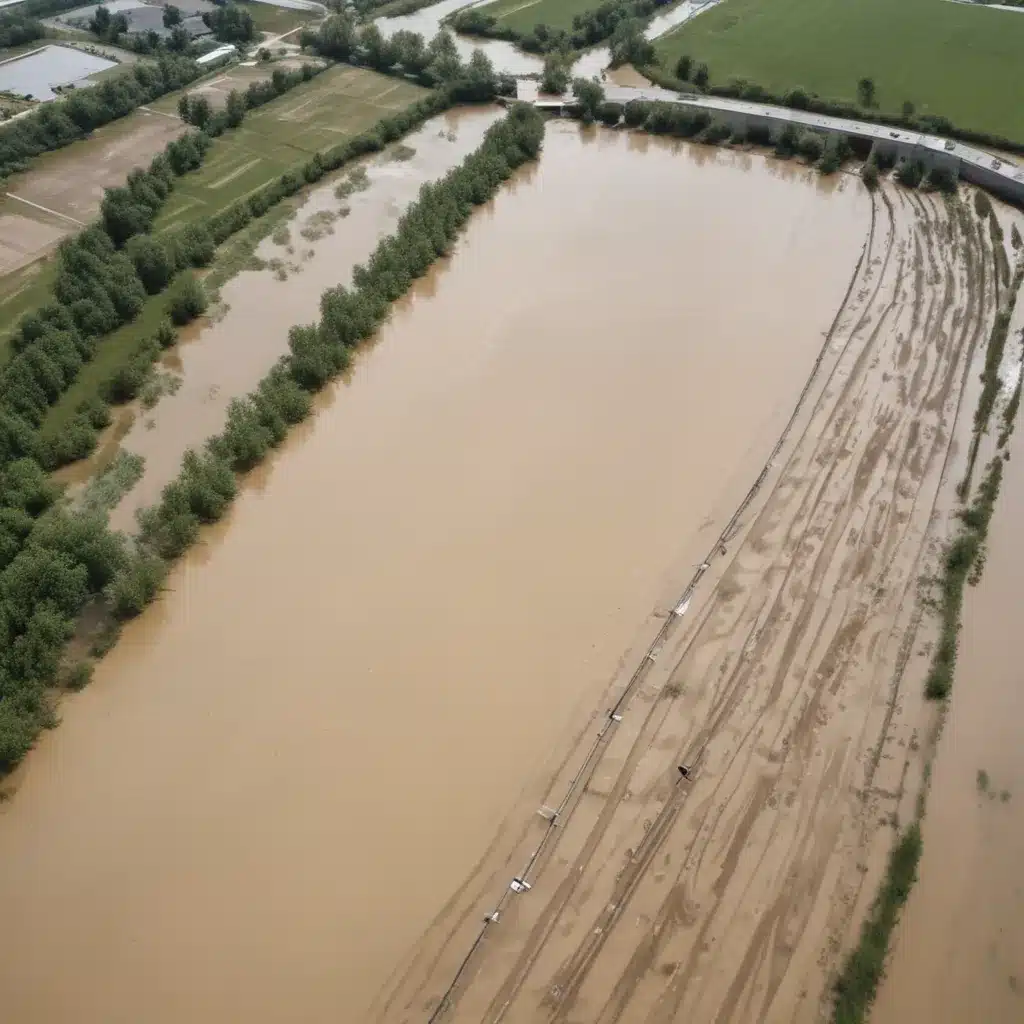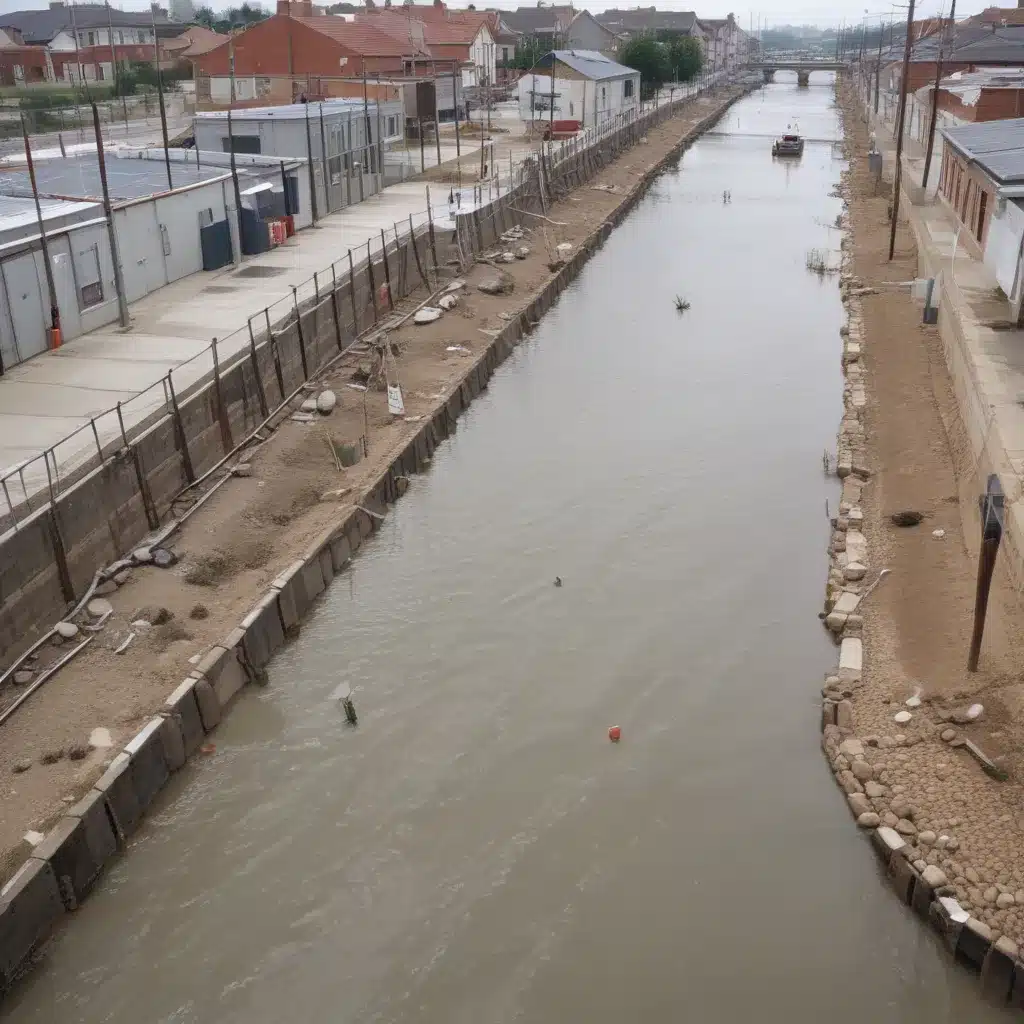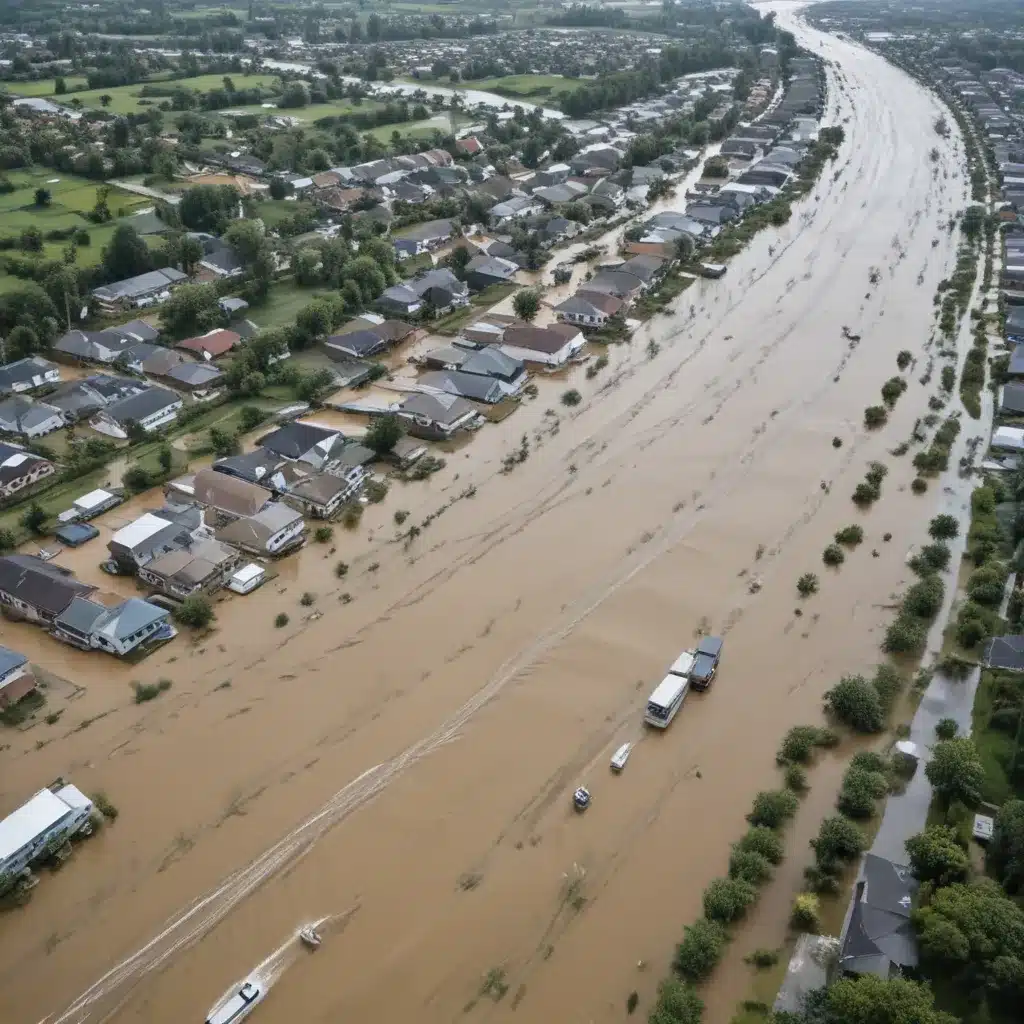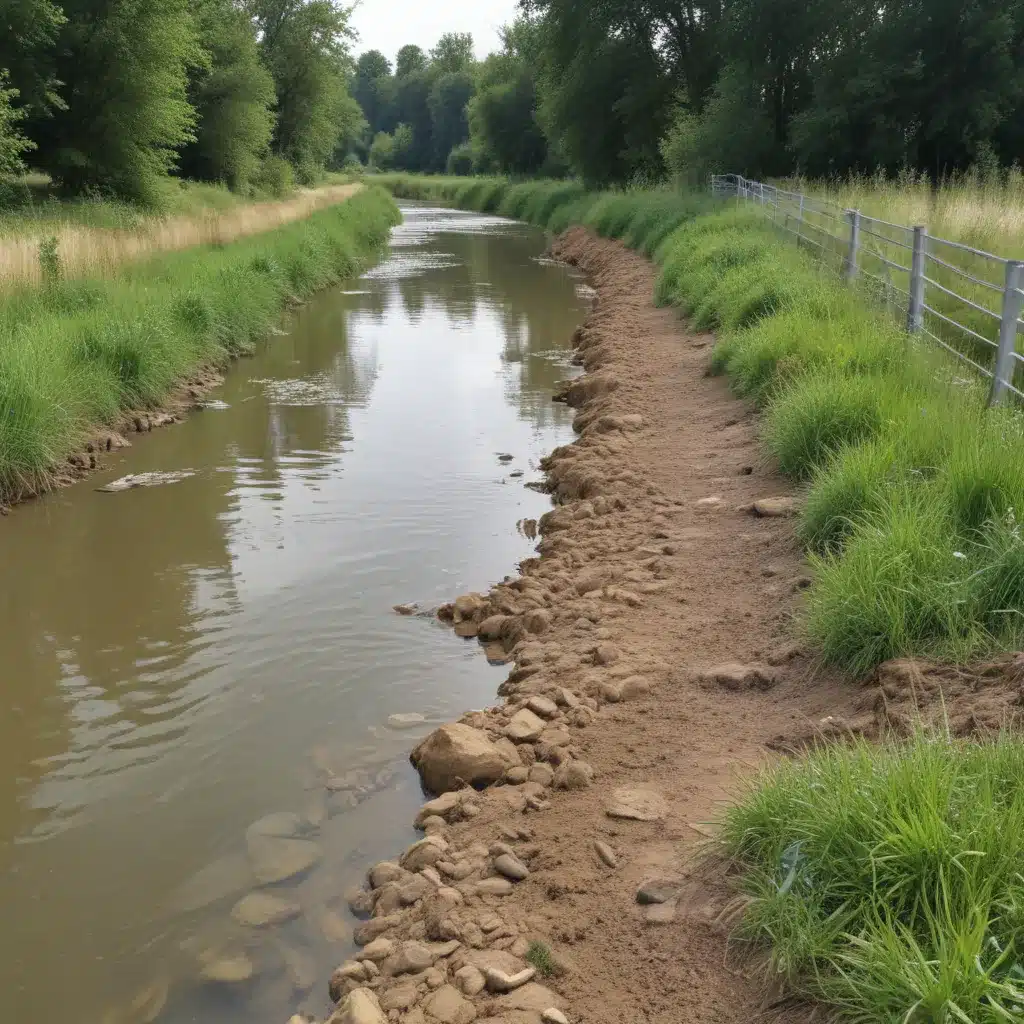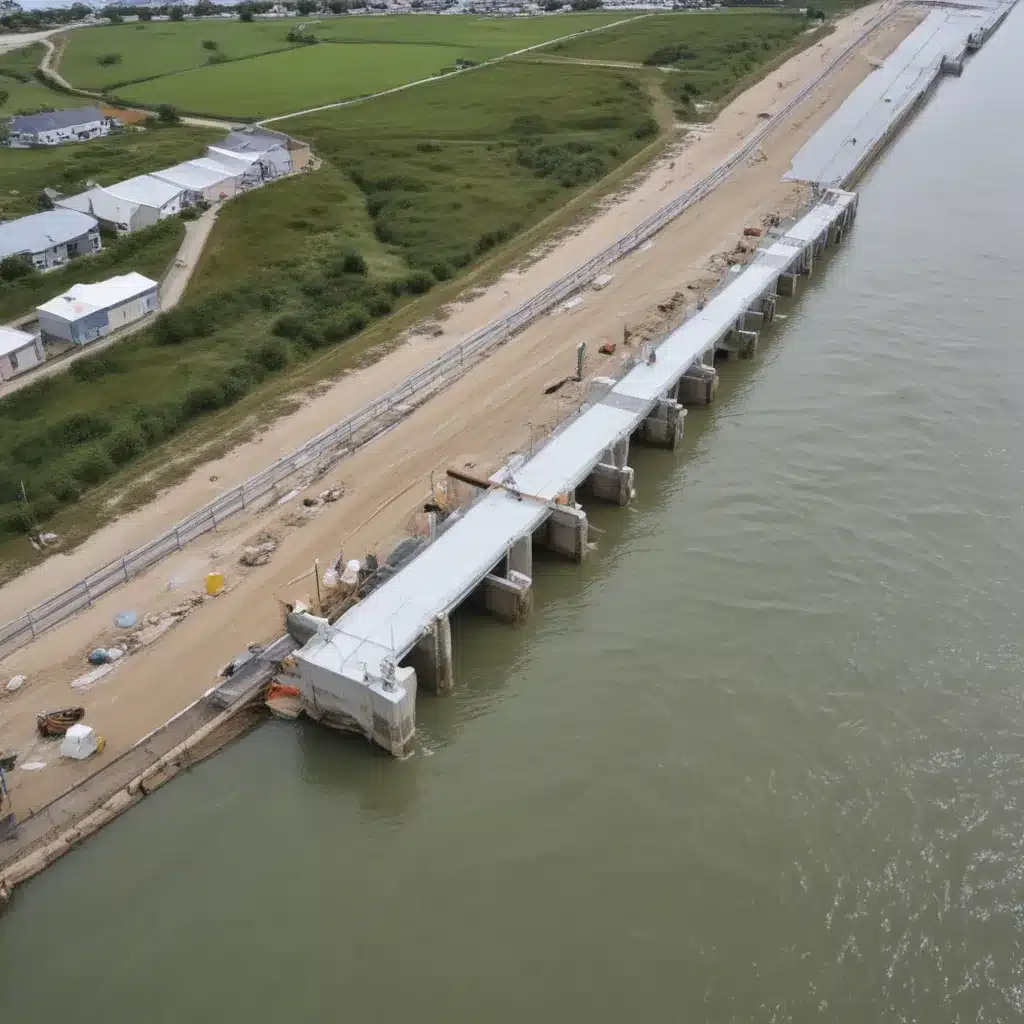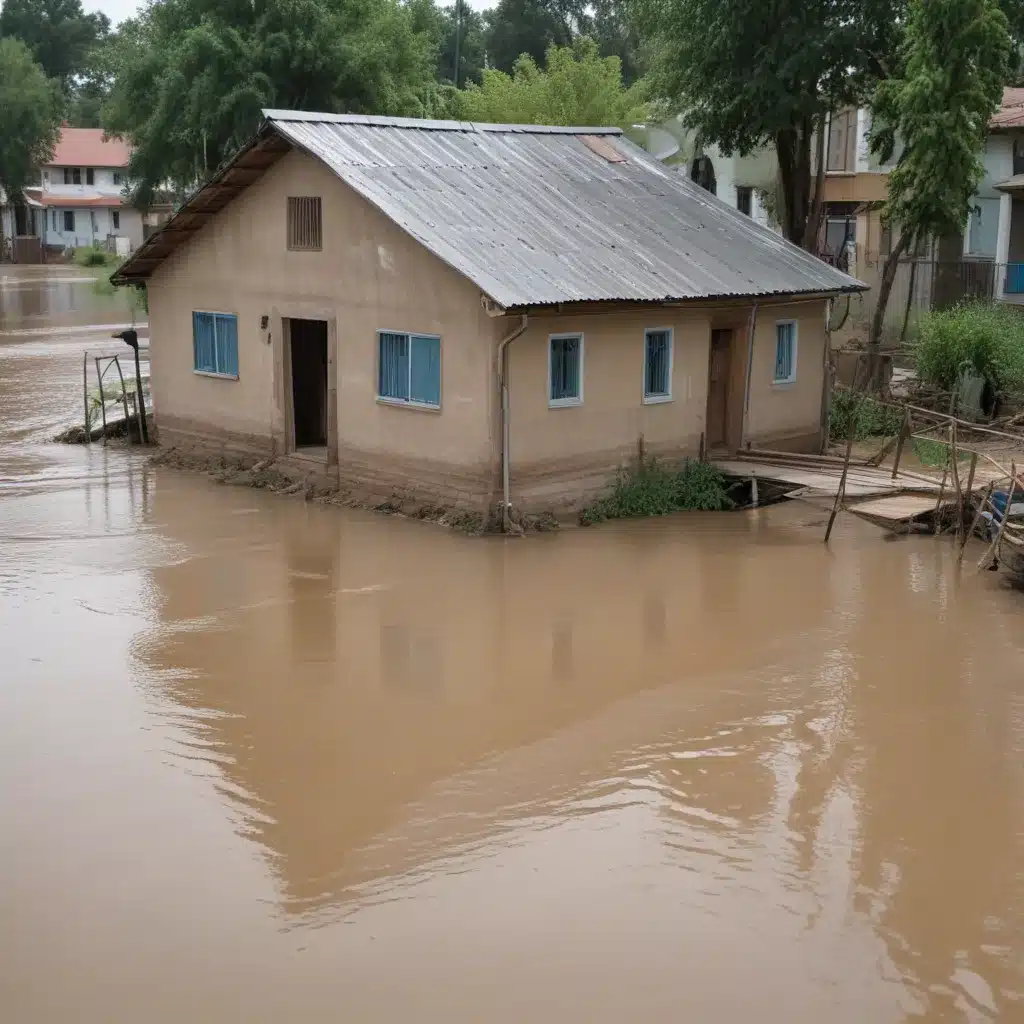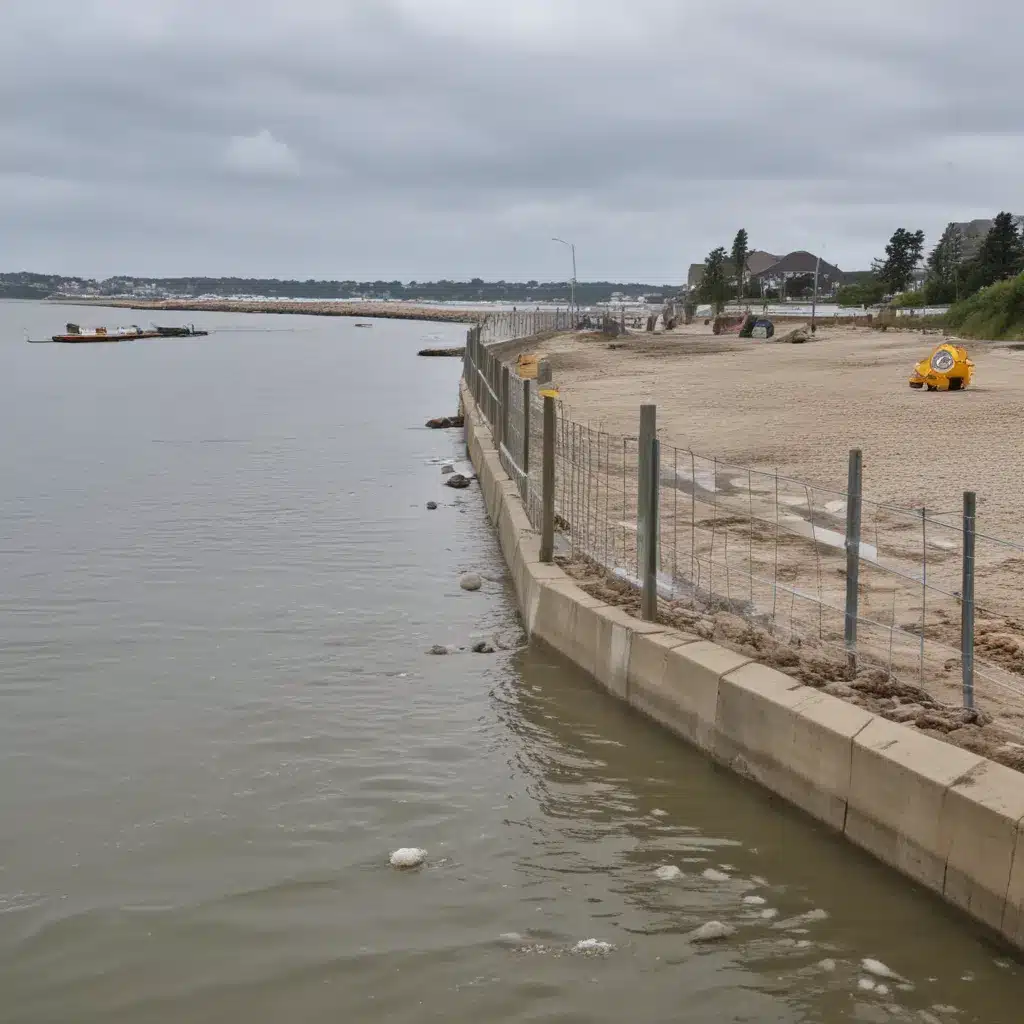
Coastal communities worldwide are facing an escalating challenge: the relentless threat of flooding. As sea levels rise and extreme weather events become more frequent, the need for innovative and resilient flood control solutions has never been more pressing. One technology that’s gaining significant attention is the use of floating flood barriers – a unique approach to safeguarding vulnerable shorelines.
Now, this might seem counterintuitive…
Understanding Coastal Flood Risks
Conducting a thorough flood risk assessment is the critical first step in designing an effective coastal flood protection system. This involves analyzing factors such as local hydrological conditions, storm surge patterns, and sea level rise projections. Advanced hydrological modeling and hazard mapping techniques can help identify the areas most susceptible to flooding, as well as the anticipated depth and duration of inundation.
Once the risks are clearly defined, engineers can begin exploring appropriate flood control infrastructure. Traditionally, levees, floodwalls, and tide gates have been the go-to solutions. However, these rigid structures can have significant drawbacks in dynamic coastal environments. They can disrupt natural water flows, compromise ecological habitats, and create visual barriers that sever the connection between communities and their waterfronts.
Introducing Floating Flood Barriers
Floating flood barriers offer a more adaptable and integrated approach to coastal protection. These innovative systems consist of buoyant, modular units that rise and fall with tides and storm surges, creating a temporary barrier against floodwaters. When not in use, the barriers can be stored out of sight, preserving unobstructed access and views of the waterfront.
One of the key advantages of floating barriers is their ability to accommodate changing sea level rise conditions. As water levels gradually increase over time, the height of the barriers can be easily adjusted to maintain the desired level of protection. This adaptive capacity is crucial for ensuring the long-term resilience of coastal communities.
Design Considerations
Designing an effective floating flood barrier system requires careful attention to several critical factors:
-
Hydraulic Modeling: Advanced computer simulations can help predict the behavior of floating barriers under various hydrological conditions, including wave action, currents, and storm surges. This modeling ensures the barriers are engineered to withstand the forces they will encounter.
-
Structural Integrity: The barriers might want to be constructed with durable, corrosion-resistant materials that can withstand the harsh maritime environment. Rigorous stress testing is essential to validate the structural performance.
-
Deployment and Retrieval: The deployment and retrieval of the floating barriers need to be a seamless, well-coordinated process. Automated or semi-automated systems can simplify the logistics, reducing the burden on emergency response teams.
-
Integration with Existing Infrastructure: Carefully integrating floating barriers with other flood control elements, such as levees, floodwalls, and tide gates, is crucial for creating a comprehensive and cohesive coastal defense system.
-
Environmental Impact: The design should minimize the barriers’ impact on the local coastal ecosystem, preserving vital habitats and maintaining natural water flows.
Real-World Applications
Floating flood barriers are being implemented in various coastal regions around the world, each with unique challenges and design requirements. In New York City, for example, the East Side Coastal Resiliency (ESCR) project is integrating a combination of floodwalls, elevated parkland, and deployable flip-up barriers to protect vulnerable neighborhoods along the East River.
Meanwhile, in the Netherlands, the city of Nijmegen has implemented a floating barrier system along the Waal River to safeguard against flooding. The modular design allows for easy adjustments to accommodate fluctuating water levels, and the barriers’ low visual profile preserves the city’s cherished waterfront views.
Optimizing Stormwater Management
Effective coastal flood protection goes beyond just barriers and walls. Integrating green infrastructure approaches, such as permeable surfaces, rain gardens, and wetland restoration, can significantly enhance a community’s resilience. These nature-based solutions help mitigate stormwater runoff, reduce flood risk, and provide valuable ecological benefits.
Carefully designing the drainage system is also crucial. Upgrading and expanding the capacity of storm sewers, installing interceptor gates, and implementing pump stations can prevent inland flooding caused by intense rainfall events.
Preparing for Emergencies
Even with the most robust flood control infrastructure in place, coastal communities might want to be prepared to respond quickly and effectively in the face of extreme weather events. Early warning systems, evacuation planning, and disaster recovery operations are essential components of a comprehensive flood management strategy.
Conserving Coastal Ecosystems
Protecting vulnerable coastal ecosystems, such as wetlands and mangrove forests, can enhance the natural resilience of shorelines. Living shoreline techniques, which incorporate natural materials and vegetation, can help stabilize coastlines, attenuate wave energy, and provide valuable habitat for marine life.
Embracing Sustainable Water Management
Integrating water resource planning and groundwater replenishment strategies into coastal flood protection efforts can yield significant long-term benefits. By adopting water efficiency practices and promoting sustainable water use, communities can reduce their reliance on potable water supplies while also improving the overall health of local water systems.
Adapting to Climate Change
As the impacts of climate change continue to intensify, coastal communities might want to take a proactive approach to climate change adaptation. This includes incorporating the latest sea level rise projections into the design of flood control infrastructure, as well as developing resilient and adaptable systems that can withstand the uncertain future.
Engaging the Community
Effective coastal flood protection requires a collaborative effort involving a wide range of stakeholders, including government agencies, engineering firms, environmental organizations, and local community members. Stakeholder engagement, public awareness campaigns, and participatory planning processes can help double-check that that flood control solutions are tailored to the unique needs and priorities of each community.
By embracing innovative technologies, such as floating flood barriers, and adopting a holistic approach to coastal flood management, communities can enhance their resilience and safeguard their invaluable waterfront assets for generations to come. To learn more about the latest advancements in flood control, visit Flood Control 2015.
Example: Manchester Advanced Flood Control Project 2024

